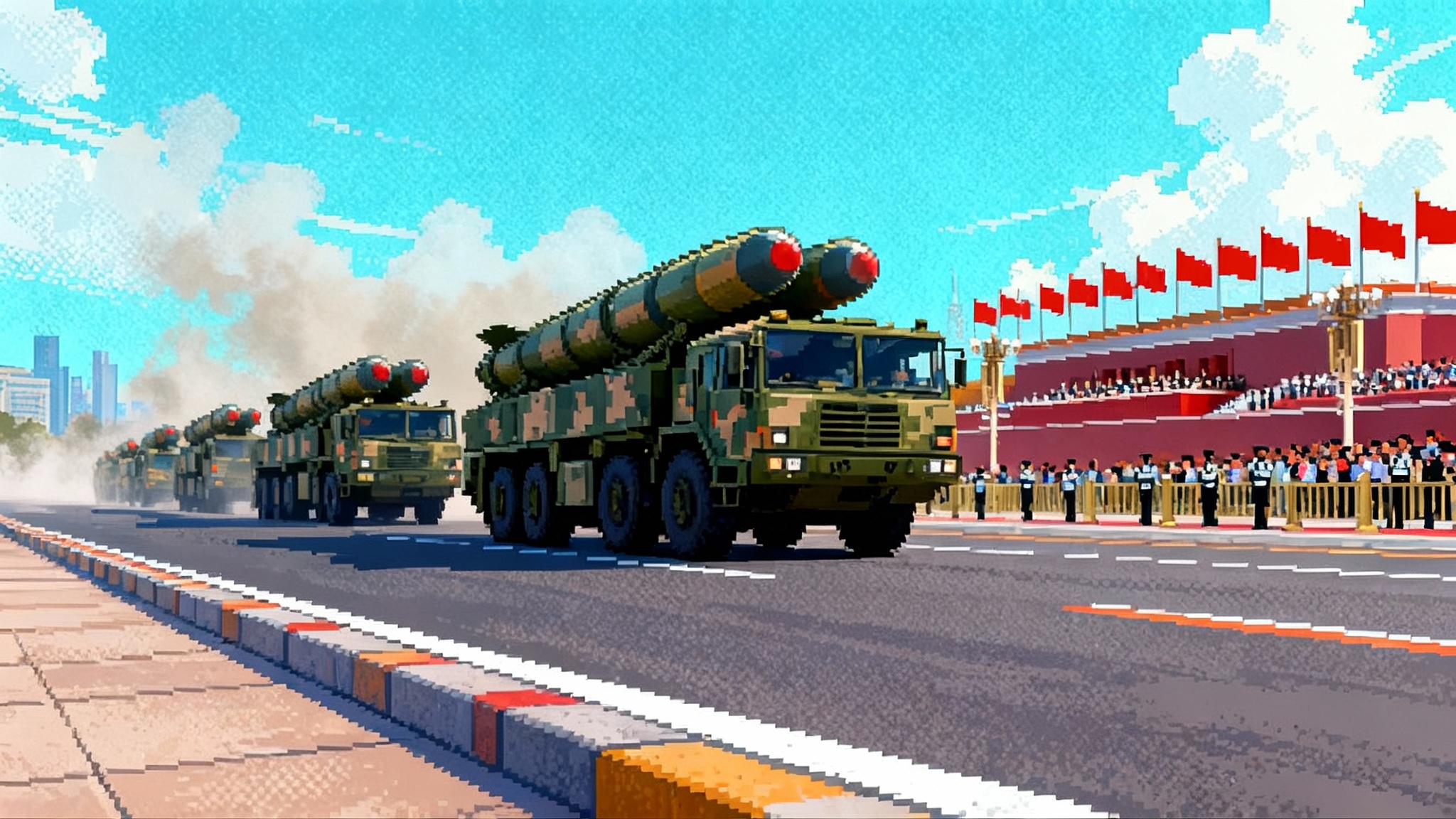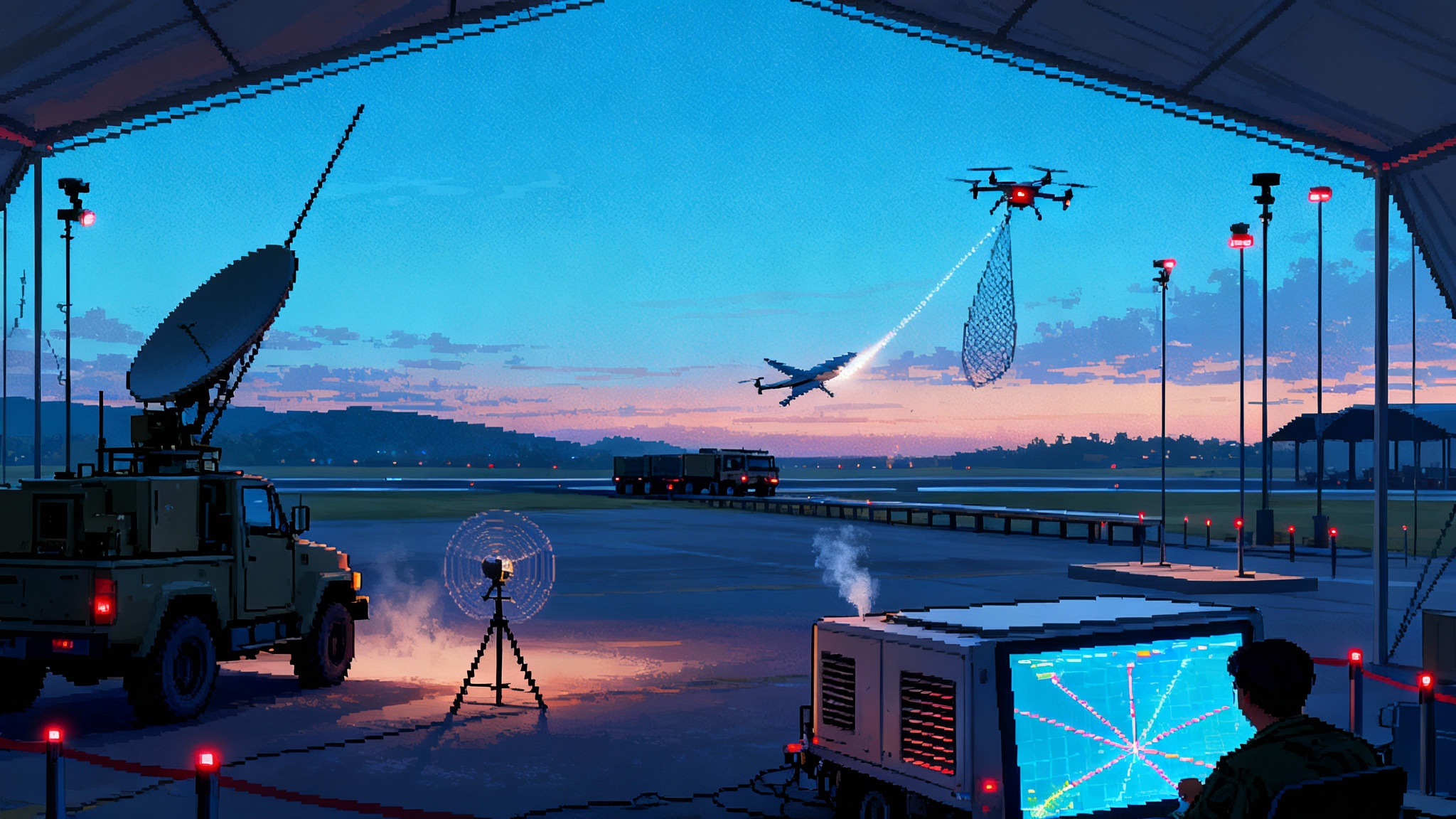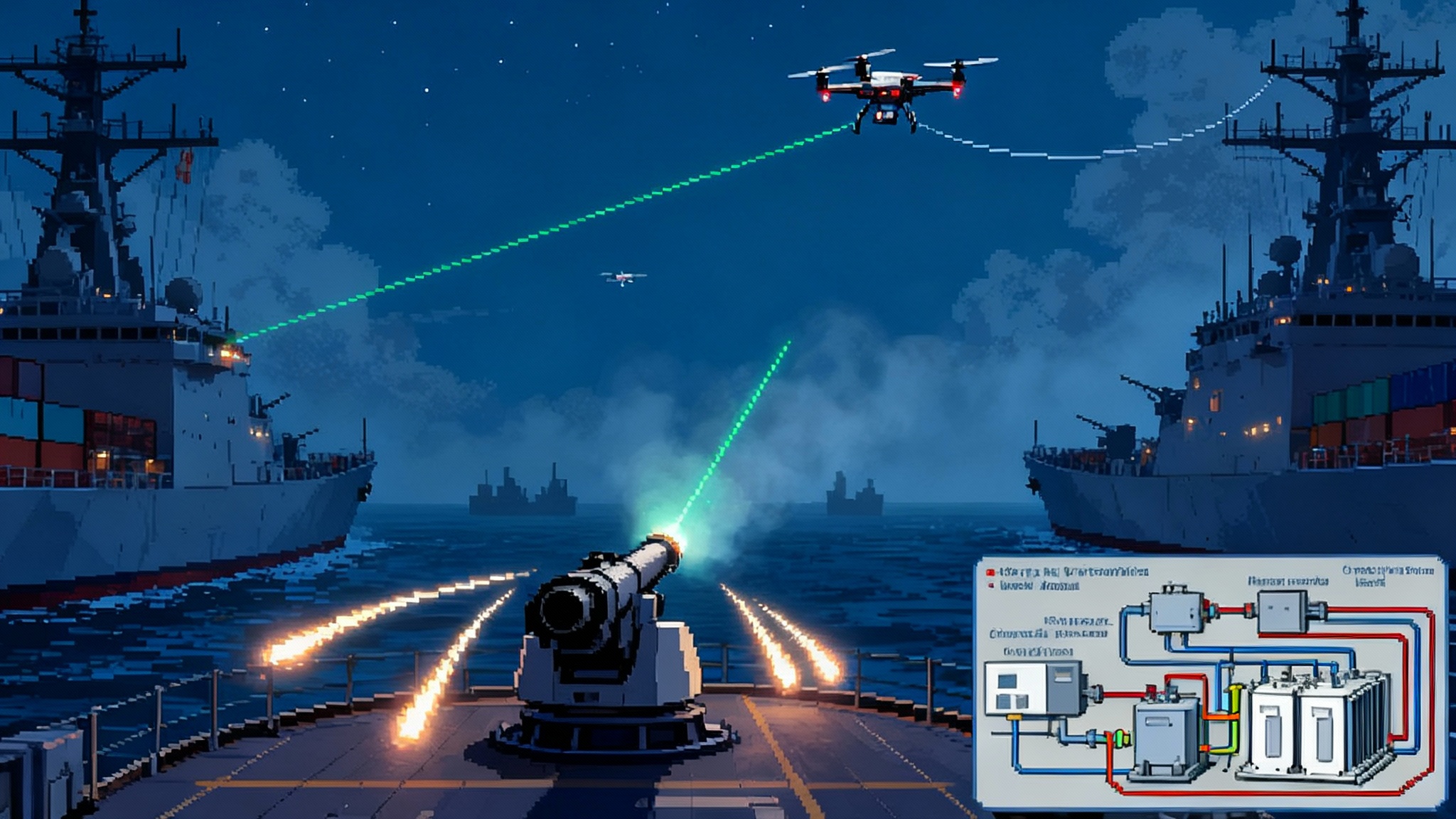Israel’s Iron Beam enters service: per shot shield math
Israel says its 100 kilowatt class Iron Beam will be ready for operational use later in 2025. If lasers really cut interception costs to a few dollars, the economics of barrages and drone swarms change fast. Here is how and where it still breaks.

A $-per-shot shield becomes real
Israel’s Defense Ministry announced in mid September 2025 that Iron Beam, the country’s high energy laser interceptor, completed final tests and will be ready for operational use before year end. The ministry framed it as the first time a high power laser defense reached full operational maturity, after weeks of trials intercepting rockets, mortars, small aircraft, and UAVs in southern Israel. That timing matters because it lands in the middle of a prolonged era of massed rockets and drones. See the reporting in Reuters on Iron Beam readiness.
If that milestone holds, Israel will be the first country to field a laser as a standing layer in a national air defense network. It will sit below interceptor missiles in range and cost, but above guns and jammers in lethality and precision. Think of it as a giant cost lever that frees expensive interceptors to focus on the hardest targets.
The cost-per-shot calculus flips
The modern defender has been in an ugly spreadsheet war. Attackers flood airspace with cheap rockets and drones. Defenders answer with interceptors that can cost tens of thousands to millions of dollars each. Even when the exchange rate is favorable in lives saved and infrastructure protected, the budget burn and magazine depletion create strategic pressure.
Lasers change the slope of that line. A laser shot costs the price of the electricity and wear on the system. Developers in Israel have long said an Iron Beam intercept would be a few dollars or low tens of dollars once powered and cooled. Even if real world costs are higher, the order of magnitude gap with $40,000 class Tamir interceptors is the point. A laser battery that can redirect electrons from a generator into repeated kills, without waiting for new missiles to arrive, alters both economics and tempo.
This is not just about money. Cost drives inventory and engagement discipline. If the marginal cost approaches zero, commanders can engage earlier in a trajectory and with more repetitions per target without worrying about empty canisters. That changes how you handle spoofers, decoys, and ambiguous tracks. It also helps blunt saturation attacks by peeling off the small and the dumb, preserving kinetic rounds for the big and the smart.
What lasers do well
- Speed of light engagements. If the beam director can hold a tight spot for a few seconds, a laser deposits enough energy to burn control surfaces, sensors, or a warhead casing.
- Precision effects. A good beam can aim at seeker domes, tail booms, or motor housings. That reduces collateral fragments compared to proximity fuzes.
- Deep magazine. As long as you have fuel and cooling, the magazine is the generator. That solves the logistics tail of interceptor resupply during multi day barrages.
- Silent and scalable. There are no flash-booms to give away engagement geometry, and power can be metered to blind or burn depending on rules of engagement.
Where physics bites back
- Weather. Rain, low cloud, sea spray, dust, and smoke all scatter or absorb laser energy. Performance still drops in bad weather, and planners must assume that the day the skies are worst may be the day an adversary chooses to attack.
- Beam control. Atmospheric turbulence degrades focus. Iron Beam’s makers talk about adaptive optics and larger apertures to keep the spot small, but the practical range remains short relative to missiles.
- Dwell time. You must keep the beam on a moving target for seconds. That is hard against fast, tumbling, spinning projectiles. Threat designers can add spin, reflective coatings, or sacrificial layers to complicate heating.
- Thermal management. High energy lasers are heat engines. Powering the beam, cooling the laser and optics, and avoiding self induced thermal distortion are major design constraints.
- Line of sight and curvature. Lasers do not bend around hills or buildings. Coverage planning looks like a series of overlapping cones, not bubbles.
Accept these limits and the mission becomes clear. Lasers are for the near field and the small to medium class threats. They harvest the cheap targets and some of the expensive ones when conditions cooperate. The interceptors behind them handle the rest.
Range, power, and engagement geometry
Iron Beam is a ground based, 100 kilowatt class system, with an effective range that open sources place in the single digit to low teens of kilometers depending on target type and weather. That is enough to catch rising rockets and inbound drones over a defended perimeter if the battery is well sited. The beam director must slew quickly, lock, and hold. The fire control loop is fully networked, so cueing can come from the same radars and C2 used by Iron Dome and David’s Sling.
In practice, operators will shoot early and often. For a rising rocket, an early hit may force a warhead cook off high and outside a populated area. For a drone, a few seconds on sensors or control surfaces can tumble it short of a target.
Integrating into Israel’s layered defense
Israel’s layered shield already divides labor. Iron Dome takes short range rockets and mortars that threaten populated areas. David’s Sling and Patriot class systems reach up to cruise and short range ballistic threats. Arrow handles exoatmospheric intercepts. Iron Beam becomes a low altitude, short range sweeper that offloads Iron Dome.
Integration will likely follow a few principles:
- Common cueing and control. Operators will see Iron Beam in the same picture as Iron Dome. The laser should get first look at eligible tracks while the system holds Tamir shots for leakers or higher priority targets.
- Mixed basing. Expect both truck mounted mobile units and semi fixed sites tied to generators and robust cooling. Critical infrastructure, border communities, and air bases are obvious early candidates.
- Coverage layering. Because laser cones are local, commanders will stitch multiple cones to cover arcs of approach and dead ground. Urban clutter, hills, and coastlines will shape siting.
- Weather playbook. The C2 will bias engagements toward lasers in good conditions and pre plan interceptor heavy play calls in bad conditions.
The result is not a replacement for interceptors. It is a repricing of the first layer that changes what the higher layers must spend and how often they must reload.
Saturation attacks and the new math
Attackers will adapt. Expect more composite raids that mix drones and rockets, include decoy balloons or chaff, and try to exploit weather windows. Lasers help by pulling cost out of the denominator and by reducing the number of inbound tracks that ever reach interceptor baskets. But saturation is still about time and channels. Dwell times stack up. If ten targets arrive in a ten second window and every one needs three seconds of burn, a single laser cannot cover the set.
So defenders will stack more beams, add fast handoff between beam directors, and pair lasers with high power microwave systems that can fry the guidance of entire drone clusters. The goal is to trade cheap energy for cheap threats, at scale.
Export and co production prospects
Israel signaled years ago that Iron Beam would be co developed and co produced with partners for export. Rafael and Lockheed Martin announced a teaming agreement in 2022 to adapt the technology for the American market and others, a move that eases U.S. integration and clears a path for funding and manufacturing in both countries. Expect interest from nations already operating Israeli air defense layers or facing sustained drone and rocket harassment. Gulf states, India, and some European countries fit that profile.
Export will still be bounded by policy and integration questions. Lasers must tie cleanly into national air defense C2, and some customers may prefer to adopt a local laser program that plugs into their existing radars and command software. That is why co production matters. It lowers political friction and builds industrial depth in key markets.
Pressure on the U.S., Europe, and China
Israel’s move raises the bar. Programs that seemed perpetually five years away now face a live reference.
- United Kingdom. The UK’s DragonFire laser shot down drones in 2024 trials and the government has publicized the cost advantage, describing roughly ten pounds per shot in testing. The Royal Navy says the weapon could fit future surface combatants and the Army is exploring ground use. See the Royal Navy’s summary of DragonFire drone shootdowns. If Israel fields a working layer in 2025, pressure grows for accelerated integration on British ships and land vehicles.
- United States. The U.S. Navy has tested HELIOS on a destroyer and continues to work through power and employment concepts. The Army’s 50 kilowatt DE M SHORAD on Strykers has moved from prototypes and troop exercises toward an enduring program, while the higher power IFPC HEL aims at 300 kilowatts class lasers for fixed site defense. Israel’s operational milestone will push U.S. services to harden requirements, pick power levels, and decide how to fund real magazines of generators and coolers rather than more tech demos.
- Europe beyond the UK. Germany’s and Italy’s industry teams have demoed shipboard and land lasers. Now their ministries will be asked why a frontline ally can protect towns with electrons while Europe remains in test ranges. Expect new money for mobile power, battle management integration, and weather resilience.
- China. Chinese firms have shown multiple mobile lasers and high power microwave concepts for counter drone roles. Some have been exported in limited form. An Israeli system on combat alert will stimulate parallel deployments and more maturity in Chinese doctrine for mixed directed energy and kinetic layers.
The net effect is convergence. Everyone will keep at least one kinetic layer for the hard problems, but lasers and HPM will be expected components of any modern air defense architecture by the late 2020s.
Concepts of employment and basing
- Fixed site rings. Place lasers in overlapping rings around airports, power plants, and depots. Tie them to ground based radars and electro optical trackers. Use hardened shelters for optics and cooling plants.
- Mobile pickets. Mount on trucks and trailers that can sprint to cover artillery threatened communities or surge to a border sector before a known anniversary raid.
- Air defense hubs. Co locate with Iron Dome launchers and share C2. Lasers take first shot at short range threats, launchers fire at harder and farther leakers.
- Naval variants. Lasers live well on ships with abundant power and cooling. A destroyer with a laser can save RAM or ESSM for the heavy tracks.
Practical constraints you cannot hand wave away
- Power architecture. Fielded lasers are only as good as their generators and chillers. Expect heavy logistics for diesel, large radiators, and maintenance teams focused on optics cleaning and pump reliability.
- Safety and rules. Eye safe zones, aircraft deconfliction, and no fire arcs around civil air corridors are real planning lines. Lasers are precise, but misapplied beams can blind pilots or sensors.
- Sustainment. The business end of a laser is a clean machine. Dust, salt, and sand eat coatings. Units will need regular boresight checks, window swaps, and water quality controls for cooling loops.
What success looks like in 2026
If Iron Beam comes online as promised, by mid 2026 success will look mundane: fewer Tamir reloads, fewer sirens for short range rockets on clear nights, more drones falling outside the fence line, and a smoother cost curve through long operations. Weather will still cause bad days. Saturation tactics will still find edges. Kinetic interceptors will still do the heavy lifting against cruise missiles and ballistic reentry vehicles. But the first layer will finally be priced like the threats it kills.
The bottom line
A working, networked laser layer takes the most expensive part of air defense, the per intercept bill and the resupply cycle, and turns it into a fuel and maintenance problem. Israel’s September 2025 announcement matters because it moves lasers from staged tests into force structure. That puts immediate pressure on peers to finish what they started and to fund power and cooling along with beams. It also resets the attacker’s math. When electrons get cheaper than rockets, barrages become about ingenuity rather than invoices. That is why this milestone is a strategic one, not just a technical feat.



